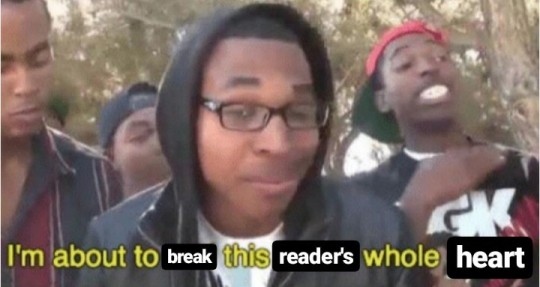Text
WEBSITES FOR WRITERS {masterpost}
E.A. Deverell - FREE worksheets (characters, world building, narrator, etc.) and paid courses;
Hiveword - Helps to research any topic to write about (has other resources, too);
BetaBooks - Share your draft with your beta reader (can be more than one), and see where they stopped reading, their comments, etc.;
Charlotte Dillon - Research links;
Writing realistic injuries - The title is pretty self-explanatory: while writing about an injury, take a look at this useful website;
One Stop for Writers - You guys... this website has literally everything we need: a) Description thesaurus collection, b) Character builder, c) Story maps, d) Scene maps & timelines, e) World building surveys, f) Worksheets, f) Tutorials, and much more! Although it has a paid plan ($90/year | $50/6 months | $9/month), you can still get a 2-week FREE trial;
One Stop for Writers Roadmap - It has many tips for you, divided into three different topics: a) How to plan a story, b) How to write a story, c) How to revise a story. The best thing about this? It's FREE!
Story Structure Database - The Story Structure Database is an archive of books and movies, recording all their major plot points;
National Centre for Writing - FREE worksheets and writing courses. Has also paid courses;
Penguin Random House - Has some writing contests and great opportunities;
Crime Reads - Get inspired before writing a crime scene;
The Creative Academy for Writers - "Writers helping writers along every step of the path to publication." It's FREE and has ZOOM writing rooms;
Reedsy - "A trusted place to learn how to successfully publish your book" It has many tips, and tools (generators), contests, prompts lists, etc. FREE;
QueryTracker - Find agents for your books (personally, I've never used this before, but I thought I should feature it here);
Pacemaker - Track your goals (example: Write 50K words - then, everytime you write, you track the number of the words, and it will make a graphic for you with your progress). It's FREE but has a paid plan;
Save the Cat! - The blog of the most known storytelling method. You can find posts, sheets, a software (student discount - 70%), and other things;
I hope this is helpful for you!
(Also, check my blog if you want to!)
72K notes
·
View notes
Text
having the first real primal urge to write in years and I can’t believe im returning to a blog of prompts I made when I was 13 and had so much more inspiration...how time flies
7 notes
·
View notes
Text
“You-! Give up?! You can’t give up!”
“I can do whatever I want and I want to give up.”
254 notes
·
View notes
Text
When you get the advice to “read more” to get better at writing, it’s not very concise and really sounds unhelpful after the third time you’ve heard it. So here, this is what you’re getting out of it (besides grammar or whatever):
You observe the way a story is organized and how it achieves its flow
You become familiar with tropes and archetypes
Story structure becomes an easy to recall memory, and every novel you’ve ever read becomes a reference book
You develop how you write stylistically, the things you hate and the things you try to emulate
You gain the skills to critique books in a smart manner, and therefore can recognize flaws in your own works that you remember bashing a novel for
11K notes
·
View notes
Text

Drafting
The Draft Notebook
Be More Productive with Ambient Noise
How to Steal: Know Your Tropes
How to Steal: Good Writers Borrow
Write What You Know (Not What You’ve Experienced)
The Best Way to End a Writing Session
How To Finish a Draft
A Few Tips on Chapters
Language, Description, & Dialog
“To Be” Or Not “To Be”: What Exactly Is Passive Voice?
Tagging Dialog
Narrative Voice
Writing Better Descriptions
Basic Rules for Metaphors and Similes
Character, Plot, & Setting
Creating Characters: a 4-Step Process
Writing Relationships Your Reader Can Get Behind
Informative Character Names
The Strength of a Symmetrical Plot
How to Foreshadow
Crafting Homes of Paper, Ink, and Neutral PH Glue
Motivation
On Writing Flawed Books
How to Return to Your Manuscript
The Acknowledgements Page
Staring at Blank Pages
What to Do When You Can’t Write
Motivational Writing Posters
Publishing
Writing the Perfect Query Letter
How to Write a Synopsis
How to Pitch Your Novel in Under a Minute
A Glossary of Publishing Terms: Vol 1
Writing Tools
Why You Should Give Scrivener a Try
Outlining, Brainstorming, and Researching with Scrivener
Drafting with Scrivener
Editing with Scrivener
CTRL+F
The Forest Productivity App
Editsaurus
NaNoWriMo
Why Try NaNoWriMo
October Prep
Why Listen to Writing Podcasts
Pick a New Daily Word Count Goal
How to Write 2000 Words a Day
How to Plan a Novel without a Story
Pacemaker: Custom Daily Word Count Website
NaNoWriMo Master Post
Other
How to Read an Absurd Number of Books
Writing Workshops: An Introduction
Writing Groups
Different Types of Fantasy Novels
Ambient Soundscapes Based on Famous Writers
Ko-Fi & Other Support
If you enjoy my posts and can afford it, I would greatly appreciate it if you donated to my new ko-fi page! Each of these posts represents multiple hours of unpaid labor. I love writing for this blog, but I’m also an underpaid 20-something trying to stay afloat. I’ve made this master post of every essay I’ve written for this blog as a way to show my appreciation in advance of any support. If you donate, to further show my gratitude and appreciation, I’ll take requests for essay topics in the ‘messages of support.’
If you can’t afford to donate via ko-fi, another great way to show your support is simply by reblogging posts that you find useful and helping my blog reach new writers.
Thanks so much!
9K notes
·
View notes
Text
Your characters have problems.
I don’t mean flaws in character design, even though they possibly do. I mean the problems your characters SHOULD have. The problems they face in your story ie. villains, conflict, war, homophobic parents, not having a date to the big dance. Y’know…like a plot.
Here are 3 ways to improve your plot
1. Your Characters Need to Make Decisions
This may sound obvious, but it isn’t always. The Problem™ isn’t just something your character has to go through that sucks—they should be faced with options, and have to make Active Decisions™ that affect the outcome of the story. This gives your characters agency—if they don’t have agency, if they don’t make decisions, your characters will be read as passive. Passive characters aren’t interesting.
2. These Choices Need To Be Hard
Give your characters inner conflict.
Hard, tough decisions to make. How to face their big problem. In figuring out what options your characters will choose, remember their
Motivations
Background
They way they were raised
Moral/Ethical/Spiritual beliefs
Fears
Loyalties
3. Figure Out The Stakes
Based on what kind of story you have, the stakes for your protagonist are going to be different.
SciFi novel about how the world is going to get obliterated by an evil force in 2 days? High stakes.
Romance novella about 29-year old Tequila Sheila who can’t seem to find a date to her brother’s wedding? Lower stakes.
And there’s nothing wrong with having higher or lower stakes—but do think about where your stakes should be for your particular story. Many stories don’t have high enough stakes for readers to be captivated; these stories need to be reconfigured, after realizing what exactly is at stake and to what degree. Understanding what your stakes are can help you figure out what kind of reading experience your book will be.
10K notes
·
View notes
Text
“Eighty percent dumbass, twenty percent dragon.”
674 notes
·
View notes
Text
tbh it’s really rude that the middle part of my wip hasn’t figured itself out yet
3K notes
·
View notes
Text
write for the audience you want, not the one you’re afraid of
80K notes
·
View notes
Text
“She generally gave herself very good advice, (though she very seldom followed it).”
— Lewis Carroll, Alice’s Adventures in Wonderland (via books-n-quotes)
938 notes
·
View notes
Photo
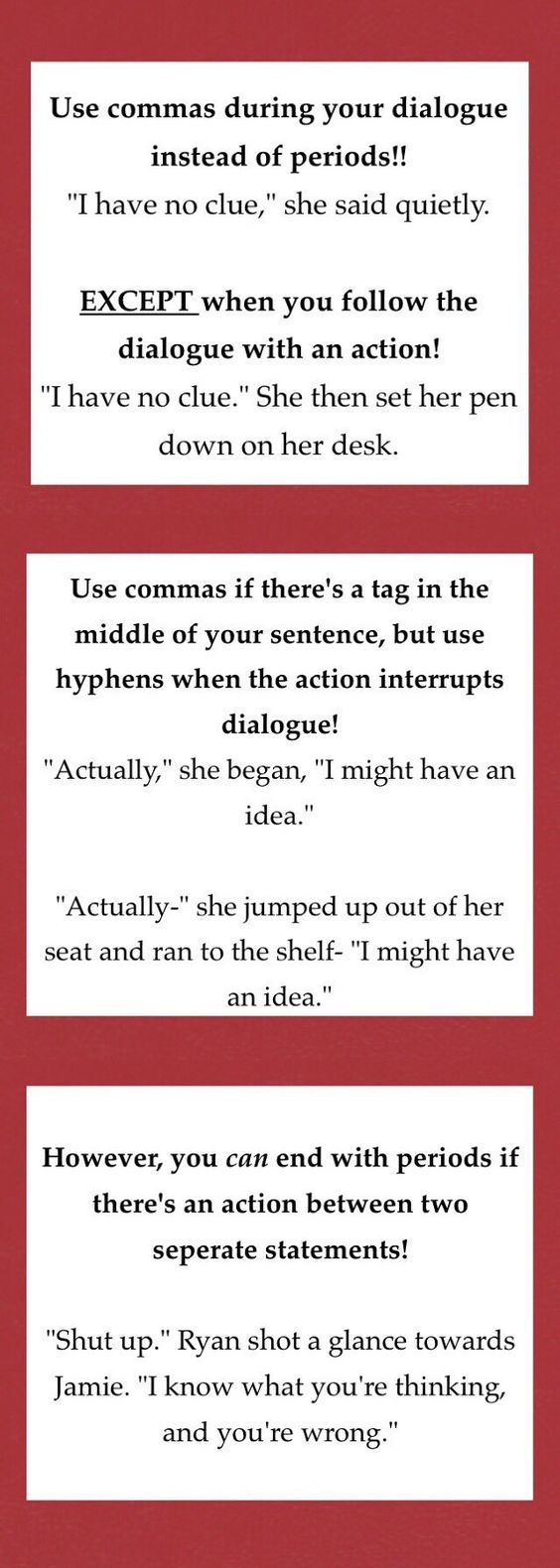
18K notes
·
View notes
Photo
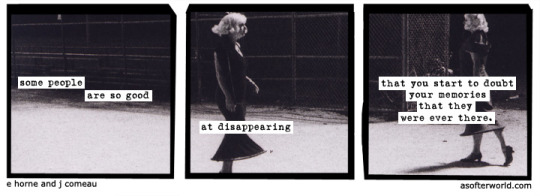
A Softer World: 1248
(How do you say goodbye to someone who was never there?)
buy this print
1K notes
·
View notes
Text
Plot This: Structure Guide
Alright so if you’re a writer then you’ve probably familiarized yourself with plot…and the structure it provides to a novel. There are countless articles online on “how to plot a novel” or the like. Which is fantastic for you writers because it’s at a fingers reach from us. Not so great when there’s about…a billion ways one can go about plotting a novel. It can seem daunting and overwhelming and more important confusing!
I want to break down this massive task bit by bit. Starting with the very bare bones and working into more detailed parts. Making it more manageable.
Now, I know some of you might roll your eyes and say I know all there is to know about plot. I was you. I went into every workshop and craft class thinking the same thing. And yet, when I started plotting my recent WIP ( The Cost of Defeat ) I realized I didn’t know jack. I thought every story I ever wrote would adhere to my system of structure because of sheer will and blunt force. Yeah wrong.
It wasn’t until just recently I started diving into the structure ( because I like pretty diagrams and being organized way more than I should) that I discovered there are a lot of different Plot Structures out there. No one bothered to ever teach me let alone discuss these things. My mind was blown.
Some worked better for me than others. Some mesh better together than others. It’s all about experimenting and figuring out what works for you. And I’m hoping that this will also help others, or at least give a jumping off point. Now it’s not a whole list ( there’s a lot of elements that I could probably talk about by themselves) but it’s a good overview of the popular ones that reoccur a lot.
1) Freytag’s Pyramid
Freytag’s pyramid is the most basic plot structure I know. It’s the one we’ve all seen in school when we start learning about story structure and analysis.

This bad boy is the simplest plot structure used to dissect and understand Greek and Shakespearean Plays.
Pros
x Simplistic. Makes it easy to understand
x Great for those just starting ( or those who want to understand film and literature analysis.
x Great for AP Literature/Comp papers
Cons
x It creates simple stories
x Not super awesome for modern novels or anything longer than about 25K words
Uses
x Children’s Literature. Picture books mostly. Children are still learning to understand things like conflict effect on characters and having such a long falling action allows for that.
x Short Stories. Since short stories are compact for punch, this structure allows you to get the most done without boring the reader in 25K words or less.
x Analysis. This structure is the easiest and most common to apply to plays, film, tv and even in classic literature. It’s a great way to dissect plot and events in order to better understand the pieces working parts
Examples: Shakespeare's Hamlet and Romeo and Juliet
Sophocles’s Antigone
Henrik Ibsen A Doll House
2) Three-Act Structure
The Three-Act Structure is probably the most known. We all know this intuitively as storytellers. Everything needs a beginning middle and end, after all.

This structure is very similar to Freytag’s Pyramid but adds elements that beef up and create points of interest. Obstacles, for example, add conflict and build up suspense for the climax. It’s also important to note that the falling action and resolution is much more compact.
Pros
x basic building block for all good stories
x Roadmap-like so you can be systematic about things
x Good “big-picture” visual
Cons
x Pacing is super important for this
x Bit rigid and formulaic
Uses
x Literally anything. Because it’s versatile it works on a plethera of stuff, let your imagineation run wild.
x Film analysis. This struccture is like the holy grail in almost any film class ( sometimes they call it the four act structure)
Examples: Sir Arthur Conan Doyle Sherlock Holmes
Alfred Hitchcock’s Vertigo
Jane Austin’s Pride and Prejudice
3) The Fichtean Curve
The Fichten Curve Is really unique in that it starts right with the rising action. There ain’t no time to build up or nice slow introductions, you’re dumping the readers right where it hurts. But you make up that lost time with the small bits of exposition

This is one of the most popular plot structures for modern novels.
Pros
x A lot of opportunities to ramp up the stakes, bit after bit
x Good for pacing
x Great for Overcoming Monster & Quest stories
x Translate over almost any genre
Cons
x Not a lot of time to slow down, breathe
x Not suited for Voyage and Return, Comedy or Rebirth stories
Uses
x Thrillers/Mystery novels. You need something to keep readers in the story, chomping at the bit. here’s the plot structure for you.
Examples: Max Brooks’s World War Z
4) Plot Embryo/Hero’s Journey
The Hero’s Journey is also super common in the literature (namely western literature) With this plot the protagonist ( the hero of hero’s journey) undergoes a literal or figurative death-like transformation that changes him.

The protagonist must venture from one state into another. To take it a step further there’s a variation called the Ploy Embyro. Dan Harmon takes the hero’s journey a bit deeper and modernizes. [ here’a great video on it by youtuber Rachel Stephen x]

As you can see, the Hero’s Journey and Ploy Embyro are both cyclical. This baby comes full circle in both plot and character. They have similar plot points. But if I were to gush about this the post would be waaay longer than it already is. This is one of my preferred methods because it just makes sense for me and allows me to have some freedom and wiggle room while still adhering to the 3 acts.
Pros
x Character development holla, cause this is where it’s at.
x Visually appealing
x Simple 8 point outline ( for those who might not enjoy long-winded outlines)
x Works alongside A beat sheet ( if you use that sort of thing)
x The holy grail for myths.
Cons
x Overdone ( but it doesn’t have to be a bad thing)
x Not suited for those who really detailed outlines
Uses
x Adventure Stories. It is all about the adventure and journey with this
x Myth Retellings. I mean it’s based on the myth structure of the Odyssey and the like so it makes sense
Examples: Harper Lee’s To Kill a Mockingbird
Rick Riordan’s The Lightning Thief
J. R R. Tolktien’s The Hobbit
5) In Media Res
A literal translation to “In the Middle”. This plot structure dumps you right in the middle of the story. Think if you were to open a story on the second of third crisis/pinch point. there’s still a lot of upward trajectory to go before the climax.
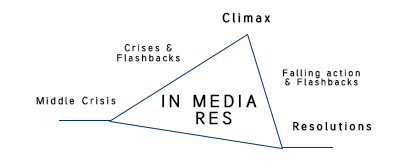
Don’t confuse this with simply opening a story mid fight/action. Media Res starts well deep into the story itself, close to the climax but with enough room you can still build up to it.
Pros
x High Actions
x Simple and fun to play with
x A good use for flashbacks
x Hell of a hook for readers
Cons
x Can be confusing for reader’s if not done right
x No build up
x takes some finessing to get just right
Uses
x Mysteries. This is a great plot if you want to start a story perhaps where the killer has already committed the murder.
x Epic Poems. Maybe you wanna write the next epic poem, this is great for that.
Examples John Milton’s Paradise Lost
Homer’s Illiad
George Lucas’s Star Wars
Now I could go on and on but this monster of a post has carried on long enough. If there’s a certain structure you’d like me to go into more detail about feel free to leave a comment on this post and I’ll be sure to add it to my line up!!
As always happy writing/creating!
XO Morgan
10K notes
·
View notes
Text
What being drunk is like, for fic writers who have never been drunk before
Nothing wrong with never being drunk (in fact, it’s probs a good thing) but it can be hard to write convincingly about alcohol if you’re not familiar with it, and I’ve read enough fics where 5 secs into reading I’m already cringing sooooo
1. It takes more than 1 beer to get drunk
Personally, it takes me (a small female occasional-drinker) either around 3 shots of any spirit, 2 large glasses of wine or 2.5 beer-like drinks within a short space of time to get over tipsy into drunk territory, and to be really drunk-drunk, a bottle of wine (3 or 4 glasses), or 5 shots should do it. BUT IT VARIES FROM PERSON TO PERSON
2. Lime and salt is literally only for tequila
and I know like less than 3 people who actually enjoy the taste of any alcohol
3. Your vision isn’t “blurry” or “foggy”
Alcohol affects your balance not your eyes, so the room defo can seem like it’s spinning but you’ll still have your 20/20. Sometimes it’s hard to focus, but it’s not constant - just every so often your eyes miss their mark.
4. Speech is less “slurred”, more in the wrong order
A great thread on writing drunk dialogue here: https://www.quora.com/How-can-I-write-dialogue-for-a-drunk-character
5. Not everyone gets hyper-sexual when drunk
It’s less a state of horniness and more a state of lowered inhibitions and social pressure
6. Coffee doesn’t sober you up like magic
Alcohol dissipates from the body at a rate of about .015% of BAC per hour, and drinking coffee doesn’t alter that rate
7. Alcohol rarely sends you into a deep and heavy sleep
You’re more likely to sleep fitfully and keep waking (sometimes to be sick, more likely to piss/drink water - sometimes just bcos being drunk is uncomfortable), unless you’re an alcoholic who depends on drink for sleep
8. You don’t *hic* in the middle of every sentence!!
If the drink is carbonated, then maybe, but you’re way more likely to have a problem with bloating etc with alcohol
9. You don’t go straight to black-out, speech-slurring drunk
It takes a lot of units and likely a couple of hours to work up to this stage - for different kinds of drunk this webpage is good: http://krisnoel.com/post/40871345058/my-character-is-drunk
10. Having drunk sex is difficult, awkward and rarely sexy
And you’re more likely to make-out with your friends than any strangers at a club, just because
11. Hangovers are rarely pounding, light-aversion torture
The younger/more tolerant you are, the better. Generally, for a night of heavy but not black-out drinking, you’ll be thirsty, probs nauseous and tired. The room may still be spinning but in an annoying, not painful way, and this’ll go away after a couple of hours and eating something, getting fresh air or having a shower (whatever works for you)
12. People talk nonsense when drunk
You are less likely to get a love confession and more likely to hear about all the rules for a complicated game they just invented, right that second
13. Everyone is different
Don’t make all your characters hyper, or depressive, or angry. For most of the night they won’t get to that stage anyway. Also, remember this whole list is based on my experiences, so feel free to ignore it all and do your own thing.
Happy drunk writing!
#yes yes yes#this is helpful! just good stuff#like even as someone who has been drunk i still cant seem to get it right sometimes so#writing resources#queue are you?
19K notes
·
View notes
Text
Resources For Writing Period Pieces: High Middle Ages & Renaissance

Major Events Of The Time Period
The Black Death kills approximately a third of Europe’s population {1348 - 1350}
The Great Famine {1315 - 1317}
The Hundred Years’ War {1337 - 1453}
The Western Schism {1378 - 1417}
The Gutenberg Bible published {1454}
Leonardo DaVinci is born {1452} and dies {1519}
The Crusades
Popular Culture & Society
Johann Gutenberg
Joan of Arc
Vlad The Impaler
Culture in the Middle Ages
Society in the Middle Ages
Culture in the Renaissance
Renaissance Life
Renaissance Entertainment
Middle Ages Women
Kings in Middle Ages
Middle Ages Food
Life in the Middle Ages
Middle Ages People
Medieval English Terms
Old English Insults
Clothing
Medieval Knight Clothing
Middle Ages Ladies Dresses
Medieval Lord Clothing
Medieval Peasant Clothing
Medieval Kings Clothing
Medieval Women’s Clothing
Monks Clothes in the Middle Ages
Nuns Clothes in the Middle Ages
Simple Dresses from the Middle Ages
Middle Ages Hairstyles
Miscellaneous
Middle Ages Knights
Middle Ages Castles
Knights Templar
Middle Ages People
Middle Ages Torture
Middle Ages Weapons
Siege Weapons
Feudalism
List Of Renaissance Figures
List Of Medieval Figures
Names
Medieval/Renaissance Female Names
Medieval/Renaissance Male Names
Medieval/Renaissance Surnames
English Renaissance Name Generator
Italian Renaissance Name Generator
French Renaissance Name Generator
German Renaissance Name Generator
Spanish Renaissance Name Generator
By Country
Medieval Afghanistan
Al-Andalus
Medieval Albania
Medieval Algeria
Medieval Anatolia
Medieval Armenia
Medieval Austria
Medieval Azerbaijan
Medieval Belarus
Medieval Belgium
Medieval Bosnia and Herzegovina
Medieval Bulgaria
Byzantine Empire
Medieval Croatia
Medieval Cyprus
Medieval Czech history
Medieval Denmark
Medieval Egypt
Medieval England
Medieval Estonia
Medieval Ethiopia
Medieval Finland
Medieval Georgia (country)
Medieval Germany
Medieval Great Britain
Medieval Greece
Medieval Holy Roman Empire
Medieval Hungary
Medieval Iceland
Medieval India
Medieval Iran
Medieval Iraq
Medieval Ireland
Medieval Israel
Medieval Italy
Medieval Jordan
Medieval Lebanon
Medieval Lithuania
Medieval Luxembourg
Medieval Montenegro
Medieval Morocco
Medieval Netherlands
Medieval Norway
Medieval Poland
Medieval Portugal
Medieval Romania
Medieval Russia
Medieval Scotland
Medieval Serbia
Medieval Slovakia
Medieval Slovenia
Medieval Somalia
Medieval Spain
Medieval Sweden
Medieval Switzerland
Medieval Syria
Medieval Tunisia
Medieval Ukraine
Medieval Wales
Ottoman Empire
Medieval Palestine
Medieval Persia
Medieval Latvia
Support Wordsnstuff!
Request A Writing Help Post/Themed Playlist/Writing Tips!
Send Me Poetry To Feature On Our Instagram!
Receive Updates & Participate In Polls On Our Twitter!
Like us and share on Facebook!
Read More On Our Masterlist & See our Frequently Asked Questions!
Tag What You Want Me To See With #wordsnstuff !
12K notes
·
View notes
Photo


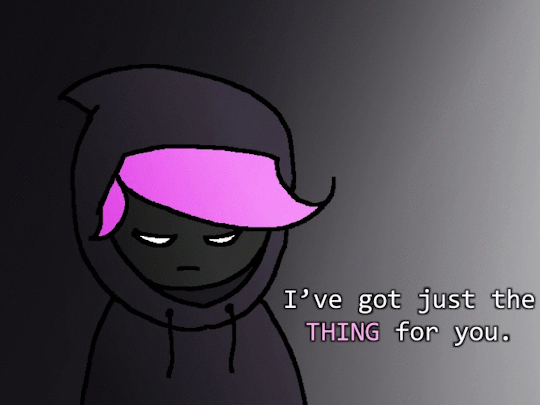
So, let me guess— you just started a new book, right? And you’re stumped. You have no idea how much an AK47 goes for nowadays. I get ya, cousin. Tough world we live in. A writer’s gotta know, but them NSA hounds are after ya 24/7. I know, cousin, I know. If there was only a way to find out all of this rather edgy information without getting yourself in trouble…
You’re in luck, cousin. I have just the thing for ya.
It’s called Havocscope. It’s got information and prices for all sorts of edgy information. Ever wondered how much cocaine costs by the gram, or how much a kidney sells for, or (worst of all) how much it costs to hire an assassin?
I got your back, cousin. Just head over to Havocscope.
((PS: In case you’re wondering, Havocscope is a database full of information regarding the criminal underworld. The information you will find there has been taken from newspapers and police reports. It’s perfectly legal, no need to worry about the NSA hounds, cousin ;p))
Want more writerly content? Follow maxkirin.tumblr.com!
419K notes
·
View notes
